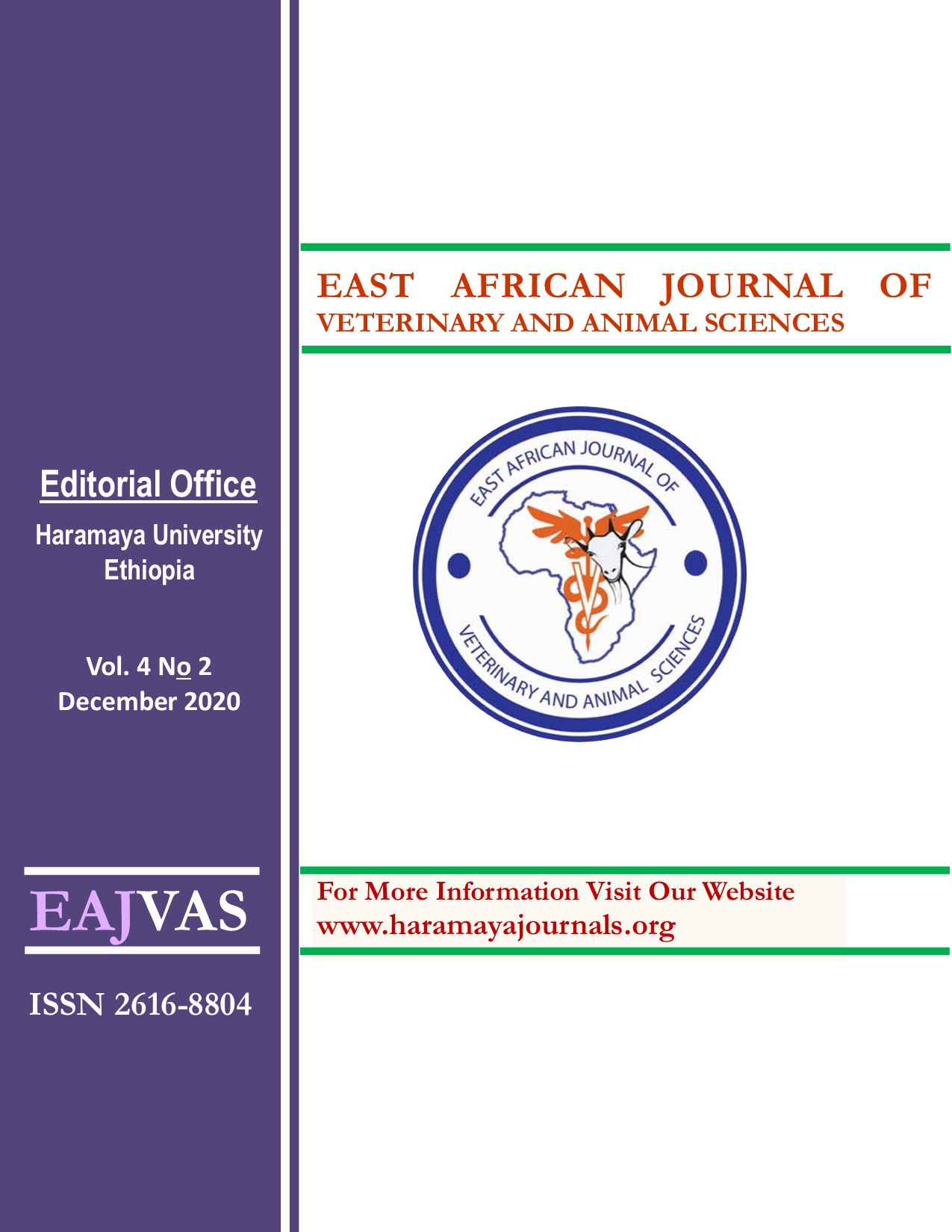Detection and Antimicrobial Profile of Bacillus cereus in Milk from Lactating Farm Animals
Main Article Content
Abstract
The occurrence of Bacillus cereus in milk from does and ewes was not well documented in Ethiopia in spite of the presence of some reports on the prevalence of the bacteria in the milk from bovine. Similarly, the antimicrobial susceptibility profile of isolates from milk was not well documented. To fill this gap, a cross-sectional study was carried out from November 2015 to March 2016 to estimate the prevalence of B. cereus in milk of farm animals and to assess the in-vitro antimicrobial susceptibility profile of the isolates using commercially available antimicrobial discs. For this purpose, milk samples were collected from 146 lactating animals (91 cows, 24 ewes, 31 does) and examined using standard microbiological procedures. The result of the study revealed that overall prevalence of B. cereus in milk samples from the dairy animals was 29.5%. The prevalence for each species were 30.8%, 29% and 25% in the milk of cows, does and ewes, respectively. The study further indicated the significant association (p < 0.05) of B. cereus with cow’s milk sample which was positive for California Mastitis Test (CMT). Based on B. cereus count, it was found that 48.8% of the milk samples harbored bacterial load above the tolerable limit (>105CFU/ml) for human consumption. The disc diffusion test further indicated that B. cereus isolates showed high resistance to specific antimicrobials such as penicillin (100%), ampicillin (100%), cefoxitin (94.7%) and amoxicillin (89.5%), while 3 (15.8%) of the tested isolates (n=19) exhibited multidrug resistance to five antimicrobials (kanamycin, ampicillin, penicillin, amoxicillin and cefoxitin). From the study it was concluded that higher proportion of milk samples from lactating cows, sheep and goats had high B. cereus load. The resistance of B. cereus to a wide range of antibacterial agents suggested the need to consider effective measures on environmental hygiene and monitor the use of antimicrobials in the treatments of mastitis in dairy animals so that animal health and welfare will be further improved and public health hazards minimized.
Downloads
Article Details

This work is licensed under a Creative Commons Attribution-NonCommercial 4.0 International License.

